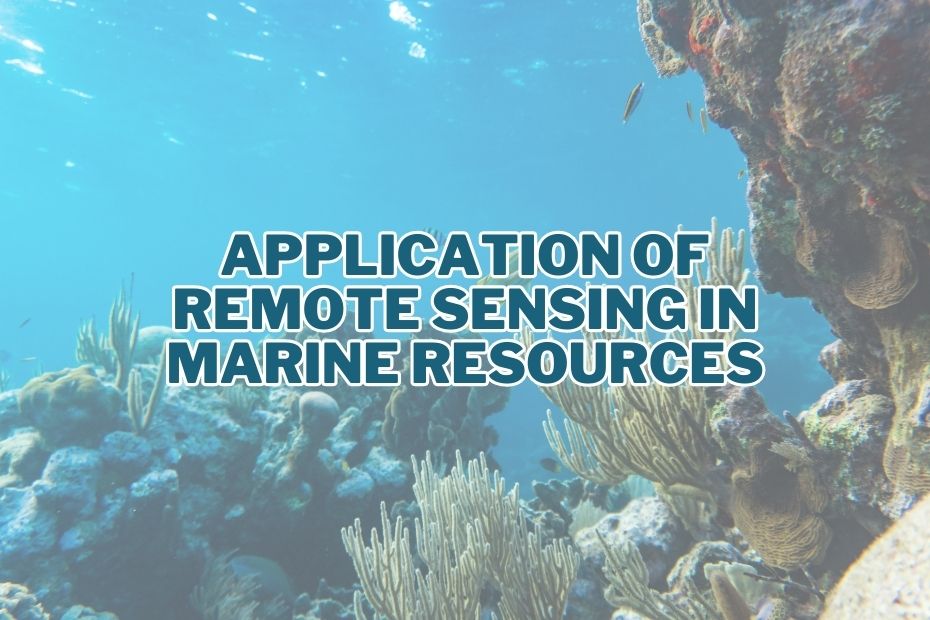Remote sensing has revolutionized our ability to understand and manage marine resources. By harnessing advanced technologies, we can now monitor, analyze, and protect the world’s oceans more effectively than ever before. In this article, we delve into the multifaceted application of remote sensing in marine resources.
Remote Sensing enables the monitoring of ocean health, tracking of marine life patterns, and assessment of pollution levels. By utilizing satellite imagery and advanced technologies, remote sensing aids in making informed decisions for sustainable marine resource utilization.
Application of Remote Sensing In Marine Resources
By utilizing advanced sensors and satellite imagery, researchers and policymakers have unlocked a multitude of applications that aid in understanding, conserving, and effectively utilizing our oceans and seas. Let’s delve into significant applications of remote sensing in marine resource management.
1. Ocean Temperature Monitoring
Remote sensing plays a pivotal role in tracking ocean temperatures. This data is crucial for understanding climate patterns, predicting weather phenomena, and assessing the health of marine ecosystems. Satellite-based sensors provide a comprehensive view of sea surface temperatures, enabling researchers to identify anomalies and predict events like El Niño.
2. Sea Level Rise Analysis
The impact of sea level rise is a significant concern due to climate change. Remote sensing techniques allow us to monitor changes in sea levels with remarkable accuracy. Satellite altimetry helps track variations in sea surface heights, contributing to our understanding of ice melt, thermal expansion, and coastal erosion.
3. Marine Pollution Detection
Identifying and mitigating marine pollution is essential for preserving aquatic life. Remote sensing aids in detecting oil spills, plastic debris, and harmful algal blooms. Satellite imagery and sensors can pinpoint polluted areas, guiding response efforts and holding responsible parties accountable.
4. Fisheries Management
Effective fisheries management relies on accurate data about fish stocks and their habitats. Remote sensing assists in locating fishing grounds, estimating fish populations, and monitoring illegal activities. This information supports sustainable practices and helps prevent overfishing.
5. Coral Reef Health Assessment
Coral reefs are fragile ecosystems under threat from climate change and human activity. Remote sensing allows us to monitor coral reef health by assessing factors such as sea surface temperature, water quality, and coral bleaching events. This data aids conservation efforts and informs policy decisions.
6. Harmful Algal Bloom Monitoring
Harmful algal blooms can devastate marine ecosystems and pose risks to human health. Remote sensing technology helps identify and track these blooms by detecting changes in water color and composition. Timely alerts enable authorities to manage the impacts effectively.
7. Coastal Erosion Monitoring
Coastal erosion is a natural process exacerbated by human activity and rising sea levels. Remote sensing provides valuable information about shoreline changes, erosion rates, and coastal vulnerability. This data aids in developing strategies to protect coastal communities and habitats.
8. Marine Traffic Management
Efficient maritime traffic management is crucial for preventing accidents and ensuring smooth transportation. Remote sensing contributes by tracking vessels through automatic identification systems and satellite imagery. This enhances navigation safety and helps prevent maritime incidents.
9. Ocean Current and Circulation Studies
Understanding ocean currents and circulation patterns is vital for predicting weather, marine life migration, and pollution dispersion. Remote sensing instruments provide data on surface currents, eddies, and upwelling, enabling scientists to model and analyze these complex processes.
10. Seafloor Mapping
Accurate mapping of the seafloor is essential for various marine activities, including resource exploration, environmental monitoring, and navigation. Remote sensing techniques like bathymetry use satellite and sonar data to create detailed maps, aiding in understanding underwater topography.
11. Tsunami and Storm Surge Prediction
Timely warnings of tsunamis and storm surges save lives and minimize damage. Remote sensing technology aids in detecting and predicting these events by monitoring sea level changes and underwater seismic activity. This information is crucial for issuing alerts and planning evacuation strategies.
12. Monitoring Marine Protected Areas
Preserving marine biodiversity requires effective management of protected areas. Remote sensing supports this goal by monitoring activities within marine protected zones, detecting illegal fishing, and assessing the impact of human presence on sensitive ecosystems.
Conclusion:
In conclusion, the applications of remote sensing in marine resource management are diverse and impactful. From monitoring ocean temperatures to protecting marine life through efficient fisheries management, these technologies play a pivotal role in understanding, conserving, and sustainably utilizing our precious marine resources.
FAQs: Application of Remote Sensing In Marine Resources
What is remote sensing in marine resource management?
Remote sensing involves using satellite-based sensors and other technologies to gather data about various aspects of oceans, including temperature, pollution, and marine life. This data helps researchers and authorities manage and protect marine resources effectively.
How does remote sensing contribute to coastal erosion management?
Remote sensing provides data on shoreline changes, erosion rates, and vulnerability. This information helps in developing strategies to protect coastal communities and ecosystems from the effects of erosion and rising sea levels.
Why is monitoring marine protected areas important?
Monitoring marine protected areas ensures the effective conservation of these zones, preventing activities that could harm marine ecosystems.
How does remote sensing assist in coastal erosion management?
Remote sensing provides data on coastal erosion, aiding in planning and implementing strategies to mitigate its effects and protect shorelines.
How does remote sensing help in tracking marine species?
Remote sensing utilizes satellite data to track migratory routes, behavior, and habitats of marine species.
